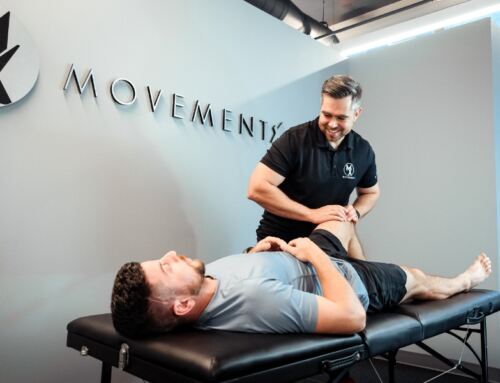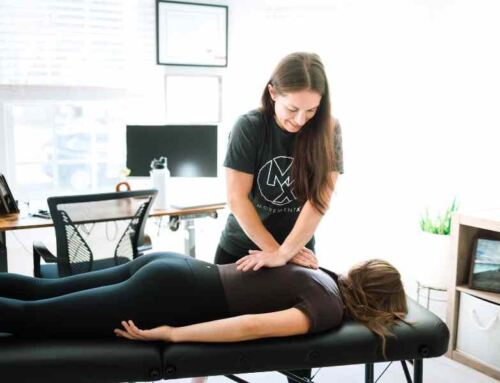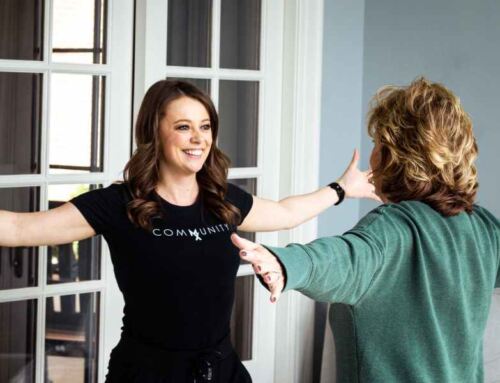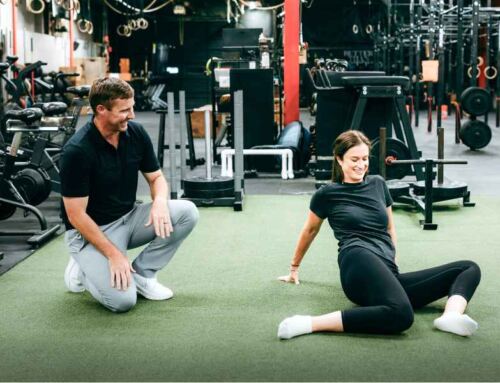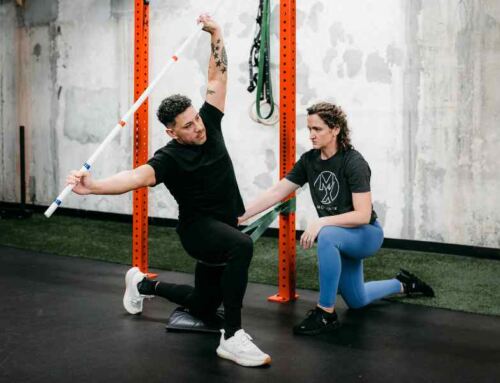Golf has been historically seen as a leisure sport: a way to get out of the house and drink a few beers while you ride around in a cart. It was even common that golfers be advised to avoid strenuous exercise.
Then in the 1990’s, a relatively well known golfer named Tiger Woods burst onto the scene and changed the landscape forever. Now, I am not advocating for anyone reading this to attempt his training routine for a number of reasons. However, strength training has emerged to play a vital role in golf performance and injury prevention. Golf may not appear physically demanding at first glance, but it requires a unique combination of mobility, stability, strength, and coordination.
Among the key physical components for optimal performance and injury prevention in golf are core and hip strength.
And remember, the core is not just your abdominal muscles.
Your core consists of the abdominals, pelvic floor, low back, and hip musculature. All these areas serve as the foundation of a powerful, efficient swing and play a critical role in maintaining balance, generating clubhead speed, and protecting the body (especially the spine) from injury.
Let’s take a closer look at why core and hip strength matter in golf (probably more than you think).
😮💨 The Problem
Golf can be a very frustrating game. I have done my fair share of blaming bad shots on factors I cannot control. “The greens are too slow, the greens are too quick, the wind is swirling, etc.” But in reality, factors many golfers complain about such as decreased distance, inconsistent swings, and pain can be controlled. Have you ever thought to yourself:
- “I’m not hitting it as far as I used to.”
- “My drives don’t carry anymore.”
- “I can’t find my swing.”
- “My timing is off.”
- “Pain is limiting my ability to swing the golf club.”
If so, these problems may be caused by poor core and hip strength!
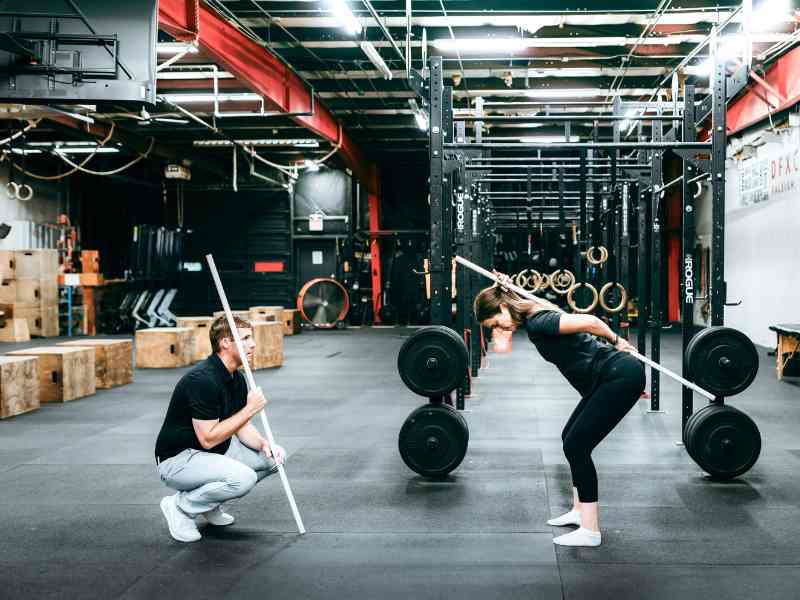
💃 Why Core and Hip Strength Matter in Golf
When looking at core and hip strength’s impacts on your golf game, there are 4 dimensions to consider. Power generation, swing mechanics, injury prevention, and finally balance & postural control. Here’s a breakdown of each.
1. Power Generation & Distance
The golf swing is a complex rotational movement involving a kinetic chain that begins at the ground and transfers energy up through the hips and core, into the upper body and finally the club.
The core and hips are central to this chain. Strong hip and core muscles allow golfers to create and transfer force more effectively, leading to increased swing speed and distance.
By increasing maximal strength in the core and hips, players will create greater force, which will allow them to generate more power (as distance)!
2. Swing Consistency
Weakness in these areas can lead to compensations in technique—such as overusing the shoulders and lumbar spine—which often result in inconsistent swings and poor ball control.
A stable core and mobile/stable hips allow for a more controlled, repeatable swing with a full range of motion. This results in more consistent ball striking.
3. Injury Prevention
Common golf injuries include low back pain, hip strains, and knee issues, often stemming from poor core stability or limited hip mobility. However, it is important to recognize if there is a true hip mobility issue, or if decreased hip stability is not allowing a golfer to access these ranges of motion.
Strong and balanced core and hip muscles help protect the lumbar spine, reduce stress on the joints, and maintain proper posture throughout the swing.
4. Balance and Postural Control
Core stability is crucial for maintaining balance during both the backswing and follow-through phases. While there is relatively low core activation during the take away of a golf swing (below 30% of maximal muscle test), activation remains relatively high and constant throughout the rest of the swing (above 30% maximal muscle test) (1)
Proper pelvic control prevents sway or slide in the swing, allowing for better timing and reduced risk of injury.
📋 Self-Assessment: Do you have a weakness?
Try these self assessments at home! If you have difficulty with any of these, it could indicate core and/or hip weakness.
Single Leg Balance Test
Core and hip stability are key components when balancing on one leg. To get a closer look at core and hip stability, kneel on one knee and place your front foot in line with the kneeling knee. Try to hold an upright trunk position.
Hip Mobility Screen
Can you rotate your hips without moving your shoulders? While mobility is a common impairment, a lack of hip stability can limit rotation.
Core Stability Check
Can you hold a plank position (on elbows or straight arm) for 60 seconds keeping your spine in neutral?
Common Swing Faults (that hint at weakness)
Do you extend early during the downswing? Weak gluteals and core make stabilization with hip rotation very difficult. This causes golfers to move towards the ball during the downswing (slide) instead of rotating the hips, leading to early extension and loss of posture.
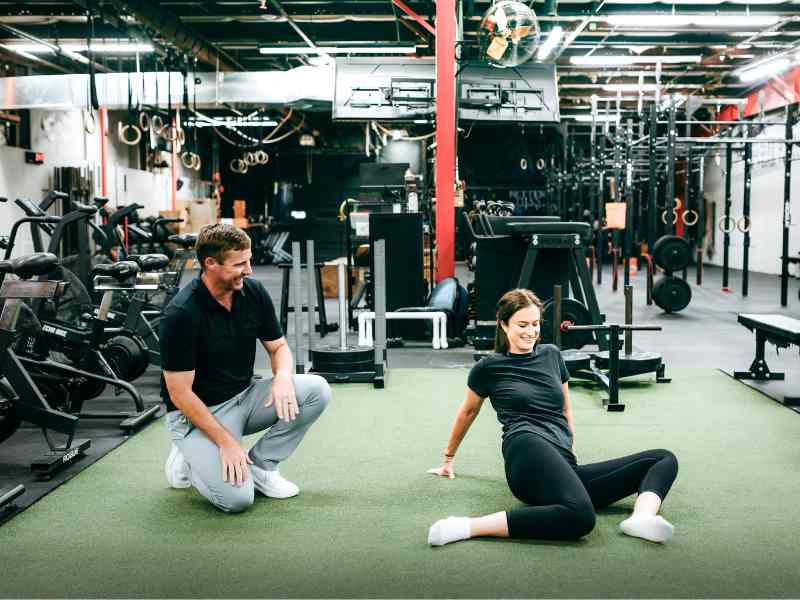
🤕 Common Golf Injuries (Rooted In Weak Hips/Core)
Low Back Pain (Most Common)
Epidemiological studies have shown that low back conditions account for approximately 25% of all golf injuries (2). Decreased hip/core stability can force compensatory motion in the lumbar spine. Common injuries include facet joint irritation, disc herniation, muscle strains, SIJ dysfunction, and stress fractures of the pars interarticularis.
Hip Strains
The golf swing involves powerful hip rotation, especially in the lead hip during follow-through and the trail hip during the backswing, which can result in muscle strains. Also, repetitive practice and play can fatigue hip stabilizers, making strains more likely.
Knee Pain
Rotational forces and torque stress during the golf swing has been shown to cause meniscal irritation, ligament sprains (particularly the ACL and MCL), and patellofemoral pain (pain under the knee cap).
The golf swing requires a large amount of rotation force to produce speed and accuracy. If hip and core strength and stability are diminished, excessive strain is placed on the lumbar spine and lower extremities which can lead to injury.
Don’t wait until you experience pain to start strengthening these areas. You wouldn’t wait for your home to be on fire and start changing the batteries in your smoke detector!
♥️ How Physical Therapy Helps
Physical therapists play a key role in both enhancing golf performance and rehabilitating or preventing injuries. Here’s how:
At your first physical therapy visit, you should expect your therapist to begin with a comprehensive discussion about your chief complaints, onset/duration of symptoms, past medical history, and your specific goals. A thorough subjective history is a vital part of your initial evaluation. Next your therapist will get you moving!
1. Movement Assessments
Physical therapists can assess swing mechanics, joint mobility, and muscle imbalances. Tools like the Titleist Performance Institute (TPI) screen identify physical limitations affecting a golfer’s swing.
A good movement assessment must look at regional interdependence. Regional interdependence is the idea that dysfunction or pain in one area of the body may be influenced by or cause dysfunction in a different, seemingly unrelated region.
2. Corrective Exercise Programs
Physical therapy and working out might look similar on the surface (they both involve exercise and movement) but their goals, methods, and approaches are quite different.
After performing a thorough assessment, your physical therapist should prescribe exercises that are patient specific (it is not a one size fits all approach!).
Individualized plans target weak or imbalanced muscles, especially in the core and hips.
Exercises may include:
- Core Stability: Planks, Dead Bugs, Pallof Presses
- Hip Strengthening: Clamshells, Hip Bridges, Monster Walks
- Rotational Power: Medicine Ball Throws, Cable Rotations
- Mobility Drills: Hip Flexor Stretches, Thoracic Spine Mobility Work
3. Postural Training
Improves posture during setup and throughout the swing to reduce back strain and improve mechanics.
4. Injury Rehabilitation
For golfers recovering from injury (like low back pain or hip labral issues), PT focuses on restoring function, strength, and mobility while modifying activity as needed.

🏌️ Exercises to Get Started
Corrective exercise is a targeted approach in physical therapy that focuses on identifying and addressing muscle imbalances, movement dysfunctions, and postural issues. Its importance lies in both preventing injuries and improving overall performance.
Foundational exercises in a rehab program may include:
Dead Bug (For Your Core)
Starting Position
- Lie on your back on a mat.
- Lift your legs so your hips and knees are bent at 90 degrees (like tabletop position).
- Raise your arms straight up toward the ceiling, over your shoulders.
- Keep your lower back gently pressed into the floor (avoid arching).
Engage Your Core
- Draw your belly button toward your spine.
- Keep your ribcage down—don’t let it flare up.
- This helps stabilize your spine throughout the movement.
Movement
- Slowly lower your right arm behind your head toward the floor.
- At the same time, extend your left leg straight out, just above the floor.
- Keep your lower back pressed into the floor. Stop if your back starts to arch.
Return
- Bring your arm and leg back to the starting position.
- Repeat with the opposite arm and leg (left arm, right leg).
Perform 8–12 slow, controlled reps per side. Try to perform deadbugs 4-5x’s/week. Focus on quality over speed, control is key.
Tips for Proper Form
- Move slowly and deliberately; rushing reduces effectiveness.
- Keep your neck relaxed; don’t lift your head.
- If keeping your leg low is too difficult, raise it higher.
- Avoid letting your lower back lift off the mat.
Clamshells (For Your Hips)
Setup
- Lie on your side on a mat.
- Stack your hips and knees so they’re aligned.
- Bend your knees to about 90 degrees.
- Rest your head on your bottom arm and place your top hand on your hip for stability.
Movement
- Engage your core to keep your torso stable.
- Keeping your feet together, lift your top knee as high as you can without rotating your pelvis backward.
- Pause for 1–2 seconds at the top.
- Slowly lower the knee back to the starting position.
Tips
- Keep your feet touching; only your knee should move.
- Avoid leaning your torso back or forward—hips should stay stacked.
- Move slowly and controlled; don’t use momentum.
- To increase difficulty, add a resistance band around your thighs just above the knees.
Reps and Sets
Beginners: 2–3 sets of 10–15 reps per side, aim to complete clamshells 3-4x’s/week.
Intermediate/Advanced: 3–4 sets of 20–25 reps per side with a band
For Rotation: Pallof Press (For Your Rotational Strength)
Equipment
A resistance band or a cable machine works best.
Setup
-
Anchor the band or cable at chest height to a stable object.
-
Stand side-on to the anchor, feet about shoulder-width apart.
-
Grab the handle or end of the band with both hands and pull it to the center of your chest.
-
Step away slightly to create tension in the band.
-
Engage your core, keeping your hips and shoulders square (facing forward).
Movement
- Press: Push the band straight out in front of your chest until your arms are fully extended.
- Hold: Keep your body stable. Don’t let your torso rotate toward the anchor.
- Return: Slowly bring your hands back to your chest.
- Repeat for 8–15 reps on each side. Attempt pallof press 3-4x’s/week.
Key tips:
- Keep your core tight and glutes engaged.
- Avoid leaning or twisting your body toward the anchor.
- Exhale as you press out and inhale as you return.
- Start with a lighter resistance to focus on form.
Remember, these are beginner foundational exercises to improve core and hip stability/strength.
This is not a full exercise program. A physical therapist will modify or progress your corrective exercises as needed, then progress toward golf specific exercises.
Think about it this way: If you are a 15 handicap, you don’t want to continue shooting 15 over par every time you play. You want to improve and progress!
🧑⚕️ When to See a PT (vs. DIY)
At this point, you might be asking yourself when it’s time to see a PT. Signs you need to seek a physical therapist’s help are:
- Pain that doesn’t go away
- Pain that increases after each round or range session
- Pain limiting your ability to golf as often as you would like
- Significant swing limitations
- Previous injury that’s affecting your game
- Plateau in performance despite training
And a physical therapist can offer your golf game a few things that are much harder to do alone, like:
- Personalized assessment to find the root cause of pain or swing impairments
- Manual therapy and dry needling, followed by exercise to improve mobility and strength
- Swing analysis
- Correcting compensations
- Sport-specific programming
💡 Key Takeaway
Strong hips and a stable core are essential for any golfer.
Amateur or professional, if you’re looking to maximize performance and longevity in the sport you need them.
Whether it’s adding distance to your drive or avoiding nagging back pain, investing in physical therapy and targeted strengthening exercises is one of the smartest strategies a golfer can adopt.
I challenge anyone reading this article to reflect on the current state of their golf game right now.
- Have you noticed a decrease in distance?
- Have you noticed inconsistency in your swing?
- Is playing golf painful?
If you answered yes to any of these questions, try completing the 3 exercises described above and, if things don’t improve, make your next lesson a screening with a golf-specific physical therapist. You might find it ends up revolutionizing your game for the better.
References
- Pink M, Perry J, Jobe FW. Electromyographic analysis of the trunk in golfers. Am J Sports Med. 1993;21(3):385–8.
- Gosheger G, Liem D, Ludwig K, Greshake O, Winkelmann W. Injuries and overuse syndromes in golf. Am J Sports Med. 2003;31(3):438–43.
About the Author
Dr. Tyler Eubanks is a physical therapist and Board-Certified Orthopedic Clinical Specialist in Fuquay-Varina, North Carolina. Among Tyler’s treatment specialties are orthopedics, sports, neurologic, geriatrics, and vestibular conditions. Dr. Tyler uses a blend of manual therapy, screening, and strengthening to help you return to your favorite fitness activities even stronger than before.



